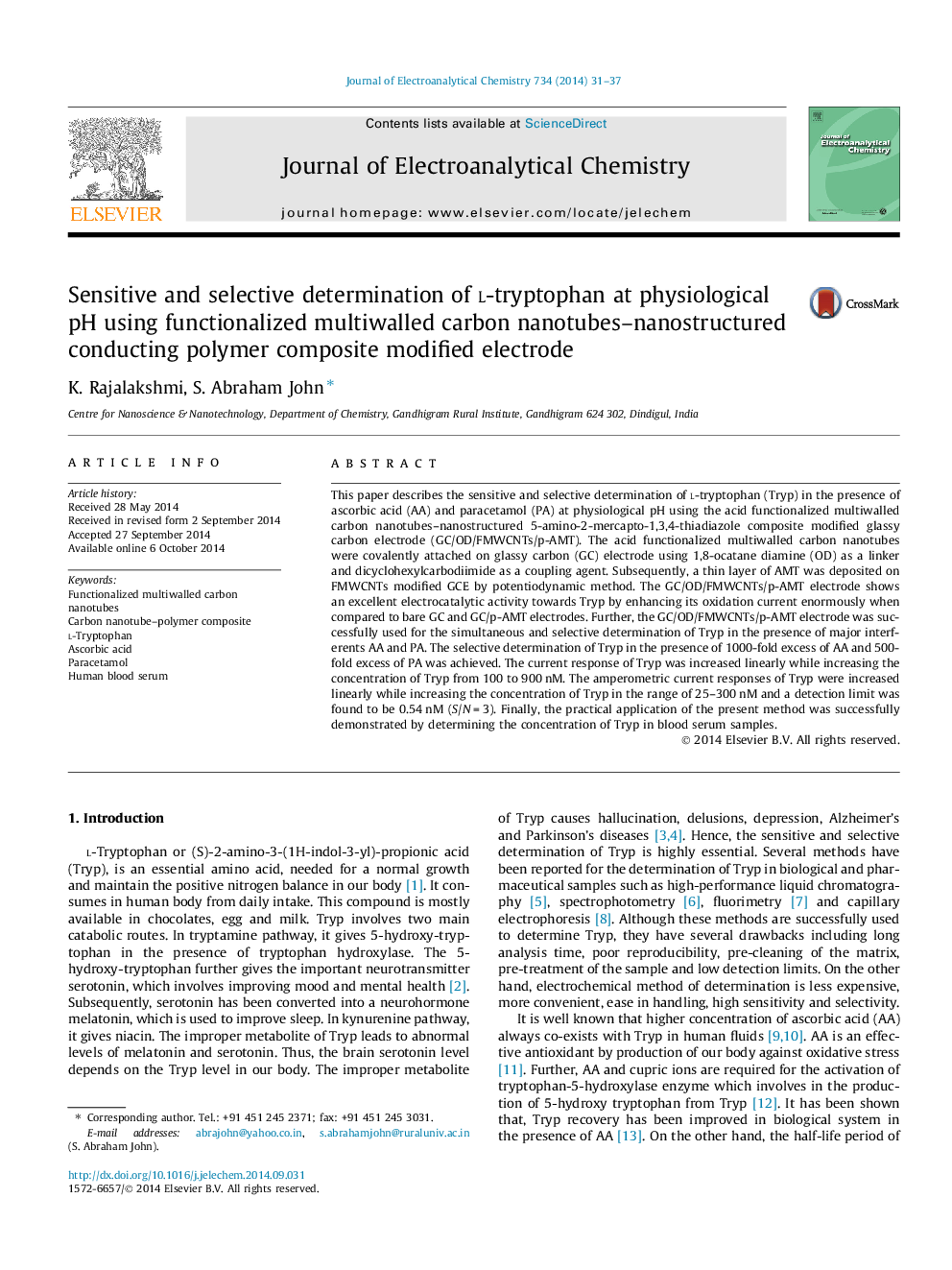| کد مقاله | کد نشریه | سال انتشار | مقاله انگلیسی | نسخه تمام متن |
|---|---|---|---|---|
| 218633 | 463210 | 2014 | 7 صفحه PDF | دانلود رایگان |

• FMWCNTs were covalently attached on GC electrode by carbodiimide chemistry.
• FMWCNTs-nanostructured conducting polymer composite modified electrode was prepared.
• The composite electrode was used for the determination of 0.54 nM Tryp.
This paper describes the sensitive and selective determination of l-tryptophan (Tryp) in the presence of ascorbic acid (AA) and paracetamol (PA) at physiological pH using the acid functionalized multiwalled carbon nanotubes–nanostructured 5-amino-2-mercapto-1,3,4-thiadiazole composite modified glassy carbon electrode (GC/OD/FMWCNTs/p-AMT). The acid functionalized multiwalled carbon nanotubes were covalently attached on glassy carbon (GC) electrode using 1,8-ocatane diamine (OD) as a linker and dicyclohexylcarbodiimide as a coupling agent. Subsequently, a thin layer of AMT was deposited on FMWCNTs modified GCE by potentiodynamic method. The GC/OD/FMWCNTs/p-AMT electrode shows an excellent electrocatalytic activity towards Tryp by enhancing its oxidation current enormously when compared to bare GC and GC/p-AMT electrodes. Further, the GC/OD/FMWCNTs/p-AMT electrode was successfully used for the simultaneous and selective determination of Tryp in the presence of major interferents AA and PA. The selective determination of Tryp in the presence of 1000-fold excess of AA and 500-fold excess of PA was achieved. The current response of Tryp was increased linearly while increasing the concentration of Tryp from 100 to 900 nM. The amperometric current responses of Tryp were increased linearly while increasing the concentration of Tryp in the range of 25–300 nM and a detection limit was found to be 0.54 nM (S/N = 3). Finally, the practical application of the present method was successfully demonstrated by determining the concentration of Tryp in blood serum samples.
Figure optionsDownload as PowerPoint slide
Journal: Journal of Electroanalytical Chemistry - Volume 734, 15 November 2014, Pages 31–37